Of the three battlefields my sister and I visited, the battle of Gettysburg occurred last. It marked Robert E. Lee’s second invasion of the North. He wanted to take the war there with the hope it would speed its end.
The cavalries of the two sides had skirmishes miles away the day before the battle. Part of Lee’s problem was not knowing where Jeb Stuart was and not having Stuart’s report on the strength and location of the Union Army. He went into the battle not knowing what kind of force he was facing.
The first shot was fired on July 1, 1863, killing a Union officer who was unaware Confederates were in the area. The two sides fought the rest of that day and the next, with Confederate forces pushing Union troops back through the town of Gettysburg. Their flanking maneuvers pushed the Union troops to the high ground along the ridge with Little Round Top. Losses were very high and a truce was called while both sides gathered their dead and wounded from the field.
General George Meade had been appointed commander of the Army of the Potomac just three days prior to the Gettysburg battle. He and his battalion joined the others on July 2 on a hill near the base of Little Round Top. Lee had his generals and army on Seminary Ridge. Between them lay a field.

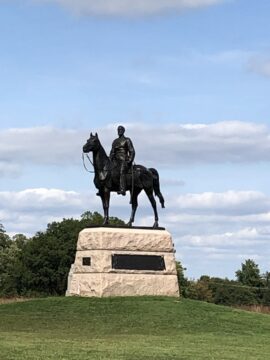
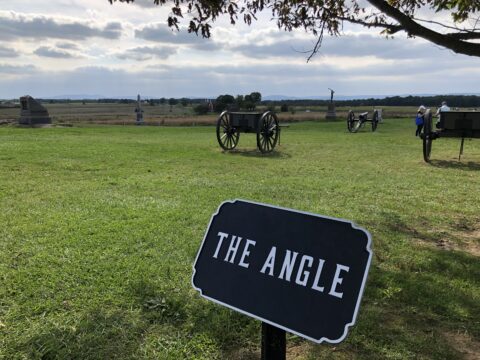
On the morning of July 3, Lee decided to charge the middle of the Union line. He thought throwing all his men at the middle, they would overrun the line, split the army in two, and win the battle. He couldn’t have been more wrong.
The Confederates formed a line a mile wide and five rows deep as they marched across the field toward the stone wall known as The Angle. As they approached the wall, they were met with a hail of bullets. The front line fell, and the second took its place. The lines kept walking forward, stepping over their fallen comrades, being met with wall of fire. By the time the smoke cleared, the Union line stood firm and what few Confederate survivors there were limped back to Seminary Ridge defeated. This action is sometimes referred to as Pickett’s charge.
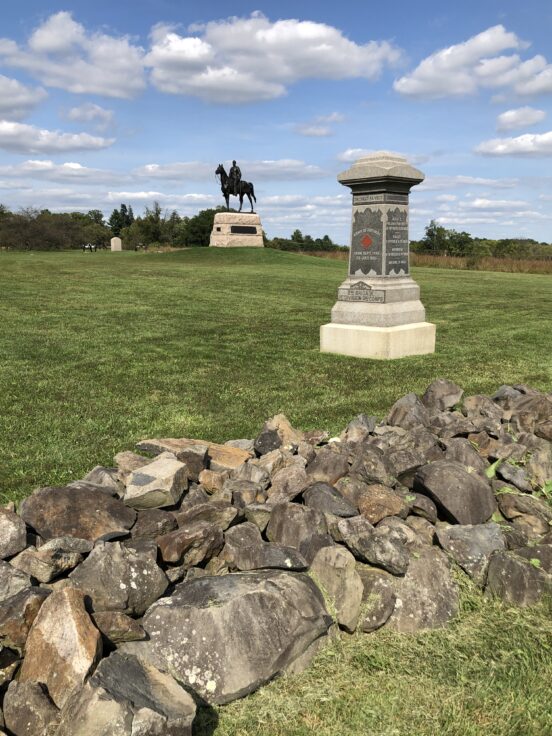
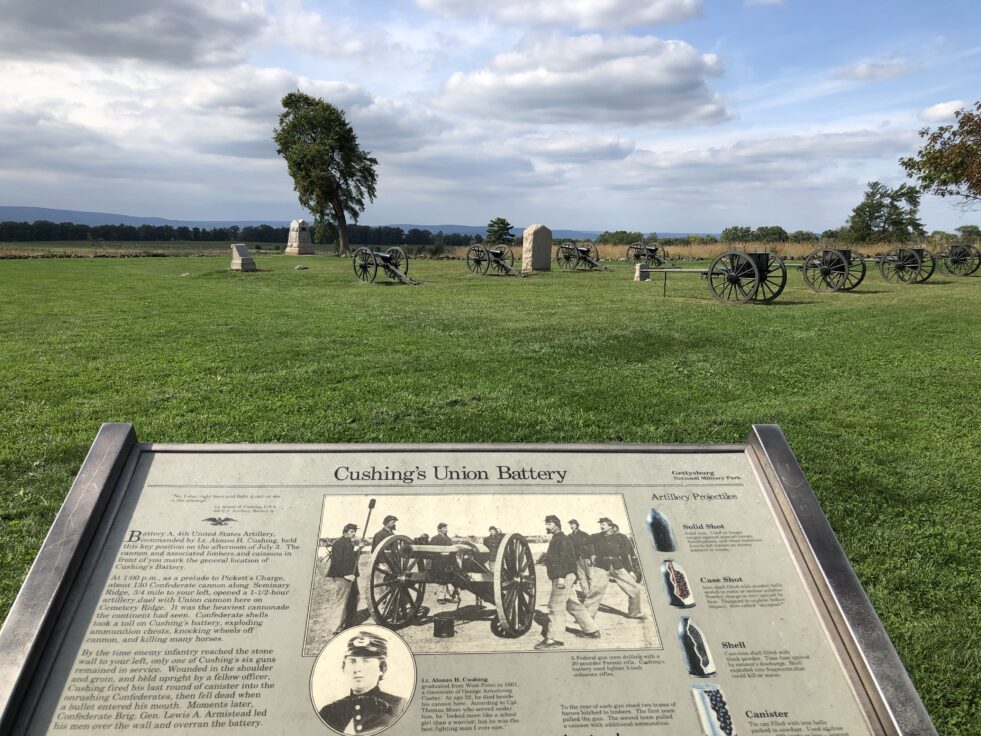
The battle was lost. Lee and his troops went back south, and Meade let him go, greatly disappointing Lincoln. Meade would be replaced less than a year later by General Ulysses Grant.
Dead bodies and the wounded were strewn across the many acres of the battlefield. Can you imagine the stench? The dead were quickly buried in shallow graves where they lay, with boards marking the graves. If they knew the identify of the dead, their names were written on the boards. Months later, they were reinterred in a national cemetery where Lincoln gave his famous speech consecrating the ground. They must have buried them in trenches because long rows of concrete inscribed with names marks the graves of the fallen. Countless white stones mark the many who were unidentified after the battle.


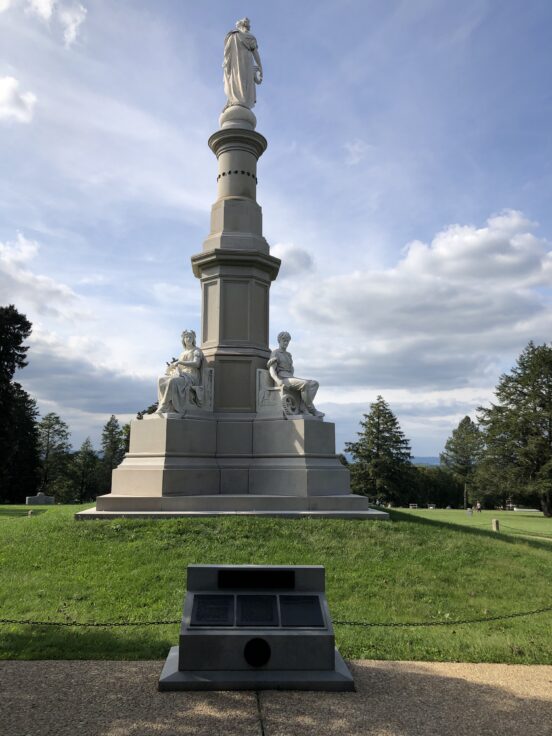
Farms and farmland were destroyed by canon fire and gunfire. Every farmhouse and houses in town were turned into hospitals to help the over 14,500 wounded soldiers of the Union and the Confederate soldiers left behind. Some families rebuilt their farms. One farm family left their destroyed Gettysburg farm behind and moved to Ohio.
The battle at Gettysburg marked the turning point of the war. The South began losing most battles, eventually resulting in their surrender at Appomattox in April 1865.
The battlefield museum is a very interesting place. It goes through the days prior to the war, the battle, and each day of the battle in detail. One display allows you to hear both sides of the debate in the state legislatures and national legislatures. Each side thought they were being noble in their causes. Each side argued vehemently for their opinion. In view of 21st century thinking, some of it was abhorrent.
When people believe a delusion, they believe it harder than a real fact. William T. Sherman
The war ended, but to this day, society still fights over some of the same issues that caused the war. Slavery may have ended, but Jim Crow laws, civil rights discrimination, voting discrimination, land steals, reservations, boarding schools, and similar attempts to subjugate certain people have brought bigotry to the forefront again and again. The war moved from battlefields to legislatures and societal expectations.
It’s time for the war to end.
I feel like anything rather than rejoicing at the downfall of a foe who fought so long and valiantly, and had suffered so much for a cause, though that cause was, I believe, one of the worst for which a people ever fought, and one for which there was the least excuse. U.S. Grant
There is neither Jew nor Greek, there is neither slave nor free, there is neither male nor female; for you are all one in Christ Jesus. Galatians 3:28


